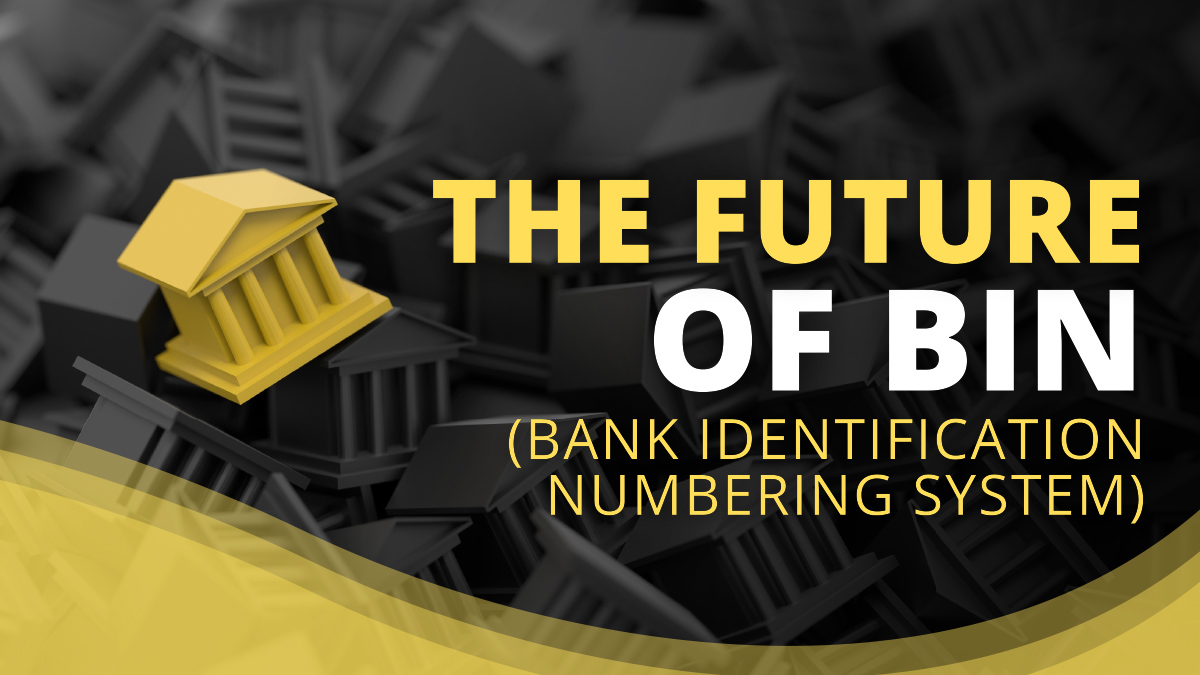The future of bank identification numbers (BINs) is on the brink of a significant shift expected to revolutionize the world of financial transactions. With the industry’s move toward 8-digit BINs, the landscape of payment processing will experience a paradigm shift. This article will delve into the intricacies of this transition, its implications, and the role of BINs in the financial ecosystem.
How do Bank Identification Numbers (BINs) Work?
Bank Identification Numbers (BINs) play a crucial role in the functioning of payment card transactions, providing essential information about the card and its issuer. Here’s a breakdown of how BINs work:
1. Identification of Issuing Institution:
- The first six digits of a payment card constitute the BIN. These digits uniquely identify the issuing bank or financial institution. For example, in the BIN “123456,” “123” represents the bank identifier.
2. Issuer Information:
- BINs carry information about the card issuer, including the bank’s name, location, and other relevant details. This allows merchants and payment processors to identify the institution responsible for the card.
3. Card Type Identification:
- BINs indicate the card type, such as credit, debit, or prepaid. This classification helps streamline transaction processing and ensures compatibility with different payment systems.
4. Geographic Region Identification:
- Certain digits within the BIN may signify the geographic region associated with the issuing bank. This information aids in routing transactions efficiently, especially in cross-border or international payments.
5. Enhanced Security Measures:
- BINs contribute to fraud prevention by allowing quick verification of the card’s legitimacy. Real-time checks against BIN databases help identify suspicious activities like unauthorized transactions or potential fraud.
6. Transaction Authorization:
- The BIN is transmitted with the account identifier to the payment processor during a transaction. The processor uses the BIN to authorize the transaction to the correct issuing bank.
7. Personalization and Customization:
- Some BINs are reserved for specific purposes or industries, allowing for customization based on the card type or intended use. For example, there may be particular BINs for business credit cards or co-branded cards.
8. Integration with Payment Systems:
- BINs integrate payment cards seamlessly with various payment systems, including point-of-sale terminals, online payment gateways, and ATMs. They ensure that the transaction is processed accurately and securely.
9. Industry Standards and Compliance:
- BINs adhere to industry standards, such as those set by the International Organization for Standardization (ISO). Compliance with these standards ensures interoperability and consistency across the global payment infrastructure.
Understanding how BINs work is essential for merchants, payment processors, and anyone involved in the payment ecosystem. It facilitates efficient transaction processing, enhances security, and contributes to the overall integrity of electronic payments.
>>Recommend Reading: 5 Best Free Business Banking Accounts of 2023<<
Types of Bank Identification Numbers
Bank Identification Numbers (BINs) are the initial digits of a credit, debit, or prepaid card number. These numbers carry specific information and can be categorized into different types based on their usage or origin. Here are a few types:
Issuer Identification Number (IIN):
Often used interchangeably with BIN, the Issuer Identification Number is the initial six digits of a card number. It identifies the institution that issued the card and helps in routing transactions.
Financial Services Number (FSN):
Like BIN/IIN, the Financial Services Number identifies financial institutions and card issuers, providing information on the card network, country of origin, and sometimes the card type (debit, credit, prepaid).
Prepaid Card Number:
Some BINs specifically denote prepaid cards. They differ in certain aspects from regular credit or debit card numbers and might have separate ranges or identifiers.
Credit Card Number:
BINs specific to credit cards often carry ranges allocated to certain card networks or issuers, allowing distinction between types of credit cards (Visa, Mastercard, American Express, etc.) based on the initial digits.
Debit Card Number:
BINs specific to debit cards might have their identified ranges or patterns, differentiating them from credit cards and providing information about the issuing bank or financial institution.
Corporate Card Number:
Specific BIN ranges are allocated for corporate or business cards, distinguishing them from personal credit or debit cards and providing information detailed to corporate accounts.
BINs are continually managed and assigned by organizations like the American Bankers Association (ABA), the International Organization for Standardization (ISO), and various card networks to ensure unique identifiers for different card types and issuers.
How it works?
Bank Identification Numbers (BINs) are the initial digits of a credit, debit, or prepaid card number. These numbers carry specific information and can be categorized into different types based on their usage or origin. Here are a few types:
Issuer Identification Number
(IIN): Often used interchangeably with BIN, the Issuer Identification Number is the initial six digits of a card number. It identifies the institution that issued the card and helps in routing transactions.
Financial Services Number (FSN):
Like BIN/IIN, the Financial Services Number identifies financial institutions and card issuers, providing information on the card network, country of origin, and sometimes the card type (debit, credit, prepaid).
Prepaid Card Number:
Some BINs specifically denote prepaid cards. They differ in certain aspects from regular credit or debit card numbers and might have separate ranges or identifiers.
Credit Card Number:
BINs specific to credit cards often carry ranges allocated to certain card networks or issuers, allowing distinction between types of credit cards (Visa, Mastercard, American Express, etc.) based on the initial digits.
Debit Card Number:
BINs specific to debit cards might have their identified ranges or patterns, differentiating them from credit cards and providing information about the issuing bank or financial institution.
Corporate Card Number:
Specific BIN ranges are allocated for corporate or business cards, distinguishing them from personal credit or debit cards and providing information detailed to corporate accounts.
BINs are continually managed and assigned by organizations like the American Bankers Association (ABA), the International Organization for Standardization (ISO), and various card networks to ensure unique identifiers for different card types and issuers.
How is the card used (Consumer or Commercial)?
The use of a card, whether it’s classified as consumer or commercial, depends on the type of account it’s associated with and its intended purpose:
Consumer Cards:
These are typically issued to individuals for personal use. They include credit cards, debit cards, and prepaid cards. Consumer credit cards are often used for personal expenses, online shopping, travel, dining, and other everyday purchases.
Debit cards linked directly to a personal checking account are used for transactions where funds are directly deducted from the individual’s account. Prepaid cards, although similar in appearance to credit or debit cards, are loaded with a specific amount of money and are not linked to a bank account.
Commercial Cards:
These cards are intended for business or commercial use. They include corporate credit cards, business credit cards, and purchasing cards (P-Cards). Commercial credit cards are issued to company employees and used for business-related expenses such as travel, entertainment, office supplies, and other operational costs.
They often come with features tailored to business needs, such as expense tracking, spending limits, and customizable reporting.
Companies issue purchasing cards used explicitly for procurement purposes to authorize employees to make purchases on behalf of the organization, streamlining the procurement process and offering centralized control over spending.
The distinction between consumer and commercial cards lies primarily in their purpose and the type of account they are associated with—personal for consumer cards and business or corporate for commercial cards. The usage of each type aligns with the respective account’s intended scope, whether for personal expenses or business-related transactions.
What is a BIN sponsorship?
BIN sponsorship involves a non-bank entity partnering with a bank to issue payment cards (like credit or debit cards) using the bank’s BIN. This allows the non-bank entity to offer payment cards without needing their own BIN from card networks, streamlining the card issuance process and enabling faster market entry. The bank retains responsibility for compliance and risk management in this arrangement.
Why Are BIN Numbers Important?
Bank Identification Numbers (BINs) are pivotal in the financial industry, serving as unique identifiers for issuing banks, facilitating accurate transaction routing, and indicating card types for compatibility. BINs enhance cross-border transactions with embedded geographic information and contribute significantly to real-time fraud prevention. Their role extends to security verification, enabling measures like CVV or CSC codes. Adhering to industry standards, BINs ensure global interoperability and support customized services based on card types. BINs are central to secure, efficient, and personalized financial transactions across the payment ecosystem.
What’s the difference between a 6-digit and an 8-digit BIN?
The main difference between a 6-digit and an 8-digit Bank Identification Number (BIN) lies in the length of the numerical code. A 6-digit BIN is shorter, while an 8-digit BIN is longer. Both serve the same fundamental purpose of identifying the issuing bank or financial institution.
Still, the additional digits in an 8-digit BIN may offer more specificity or granularity, allowing for greater identification possibilities. The choice between a 6-digit and an 8-digit BIN may depend on the needs and preferences of the card issuer or the industry standards they follow.
How To Check Bin Number?
You can use online BIN checking tools or databases to check a BIN (Bank Identification Number). Simply input the first few digits of a credit or debit card to retrieve information about the issuing bank, card type, and other details.
Alternatively, some payment processors and financial institutions offer BIN lookup services. Always use reputable and secure platforms to maintain data privacy and security when checking BIN information.
How To Reduce Your Online Store Chargeback?
Reduce online store chargebacks with clear product descriptions, secure payment processing, transparent policies, responsive customer service, authentication measures, updated contact information, delivery tracking, verified addresses, consistent billing descriptors, and staff education on issue identification and resolution.
These measures enhance customer satisfaction, minimize disputes, and protect your business from financial losses.
What is the Major Industry Identifier?
The Major Industry Identifier (MII) is the initial digit of a Bank Identification Number (BIN) in a credit, debit, or prepaid card number. This single-digit code identifies the broad category or industry to which the card belongs. The MII indicates whether the card is a credit, debit, prepaid, or associated with other specific industries. For example:
- 3: Indicates an entertainment and travel card (such as American Express)
- 4: Denotes a Visa credit card
- 5: Represents a Mastercard credit card
- 6: Indicates a Discover credit card
- 7: Typically used for gasoline cards or other specific industries
- 8: Reserved for healthcare-related services
- 9: Reserved for national assignment by individual issuers
The MII provides essential information about the card’s industry or category, aiding in card identification and verification during transaction processing.
What is a Bank Identification Code, and How Does a Credit Card Processing System Work?
A Bank Identification Code (BIC) is a unique identifier for financial institutions in international transactions. In credit card processing, the system involves authorization, authentication, transaction processing, clearing, and settlement, collaborating with the cardholder, merchant, acquiring bank, credit card network, and issuing bank.
A Bank Identification Code (BIC) is a unique identifier for financial institutions in international transactions. In credit card processing, the system involves authorization, authentication, transaction processing, clearing, and settlement, collaborating with the cardholder, merchant, acquiring bank, credit card network, and issuing bank.
Security measures like encryption ensure the safety of sensitive information throughout the process.
Does The Card Brand Match The BIN?
The bank Identification Number (BIN) is an integral part of a credit card number and is specific to the card brand. The BIN, typically the first six digits of a credit card, uniquely identifies the issuing institution or bank. Each card brand, such as Visa, MasterCard, American Express, or Discover, has a range of BINs associated with it.
By examining the BIN, merchants and payment processors can determine the card brand, allowing them to verify the card type and ensure compatibility with their payment systems. This information is crucial for accurate transaction processing, as different card brands may have distinct rules, features, and processing methods.
Why are there multiple forms of BIN?
Multiple forms of Bank Identification Numbers (BINs) exist to identify and categorize different payment card aspects uniquely. Each record corresponds to specific card types, such as credit, debit, prepaid, business, or co-branded cards.
This differentiation allows for precise identification within the financial system, ensuring accurate transaction processing and adherence to industry standards. The various forms of BINs help streamline operations, enhance security, and accommodate the diverse needs of cardholders and issuers.
New 8-Digit BINs: ISO Guidance and Industry Shift
The payments industry is undergoing a significant change as the International Standards Organization (ISO) responds to a surge in card issuers by expanding Issuer Identification Numbers (IINs) from six to eight digits. Like the Y2K event, this shift demands proactive measures from banks, processors, fintechs, and vendors.
Starting in April 2022, Visa and Mastercard will adopt 8-digit BINs, emphasizing the need for readiness. While Visa plans to issue 8-digit BINs post-April 2022 exclusively, Mastercard has not specified a discontinuation date for 6-digit BINs. The change underscores the importance of early industry-wide preparation for seamless adoption.
Final Thoughts:
The future of the Bank Identification Numbering System (BIN) promises evolution and adaptation to meet the demands of a dynamic financial landscape. Anticipated changes include potential expansions to accommodate a growing number of issuing institutions and card types, enhanced security features, and integration with emerging technologies. The role of BINs is expected to remain pivotal in ensuring secure and efficient identification within the evolving realm of financial transactions.
 Sections of this topic
Sections of this topic
















